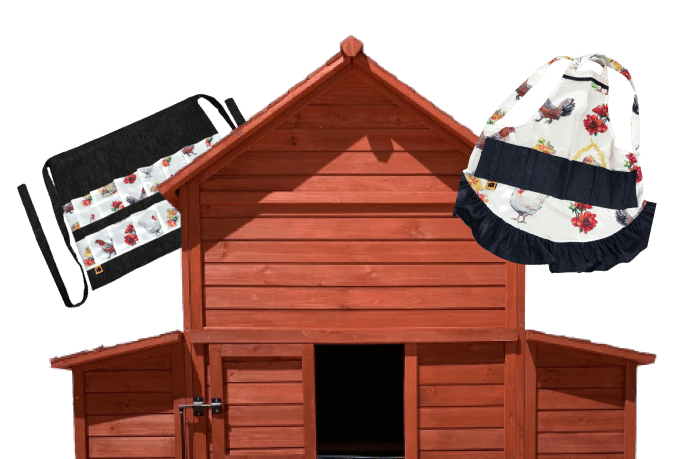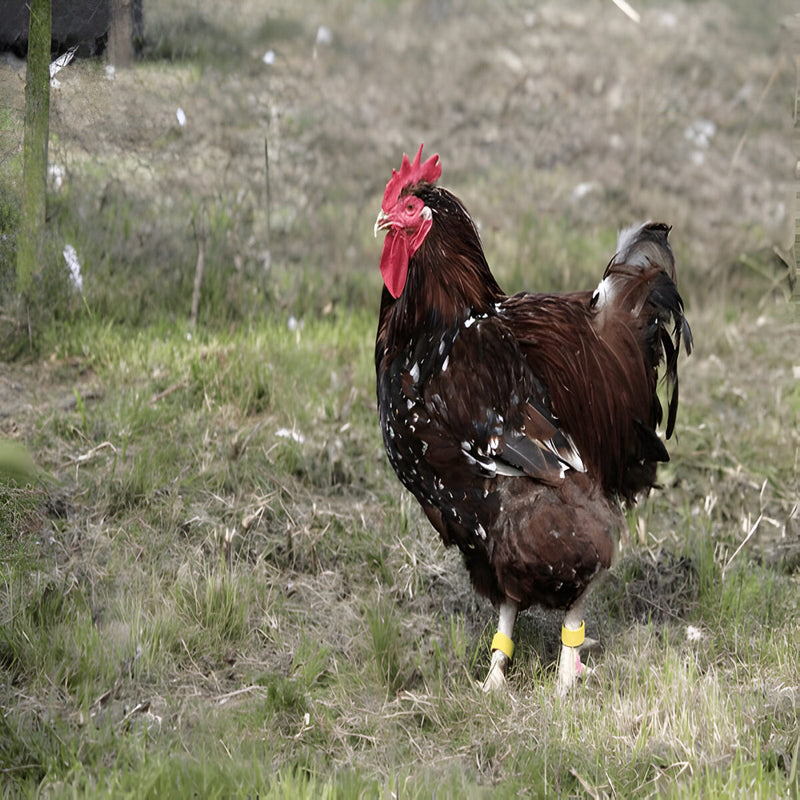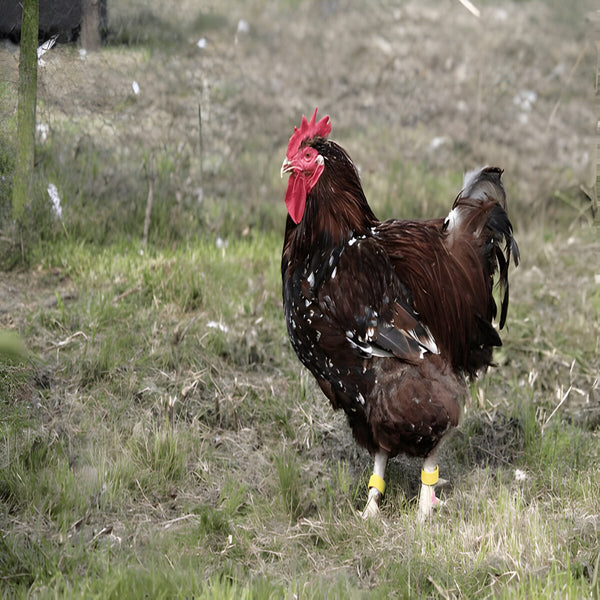-
Egg Size
Medium
-
Egg Quantity
Good (3/wk)
-
Egg Color
Brown
-
Cold Tolerance
Hardy In Winter
-
Heat Tolerance
Not Especially Heat Tolerant
-
Abundance
Rare
-
Personality
Calm
-
Size
Large Fowl
-
Feathered Feet
No
Jubilee Orpington
Jubilee Orpington Chicken
The Jubilee Orpington Chicken, introduced in 1897 by William Cook’s family, was created to honor Queen Victoria's Diamond Jubilee. These chickens are believed to be a mix of Spangled Old English Game, Dorkings, and Buff Orpingtons, with some suggesting that Speckled Sussex played a role in their development. Their unique feather pattern, which takes up to 18 months to fully develop, features a mahogany base color with black spangles and white tips. They have white beaks, legs, and feet, along with red earlobes, faces, combs, and wattles. Known for their size and gentle temperament, Jubilee Orpingtons are good brown egg layers and hardy in cold climates, making them a wonderful addition to any flock.
Jubilee Orpington Chickens are a rare and striking variation of the beloved Orpington breed. Developed around 1897 by crossing Buff Orpingtons with Spangled Old English Game Chickens, they were named in celebration of Queen Victoria's Diamond Jubilee. Although still rare in the United States, these chickens are treasured for their calm, friendly nature, making them excellent pets. They are reliable layers of cream-brown eggs, producing about 3-5 eggs per week. With their round, fluffy appearance, clean legs, and single combs, Jubilee Orpington hens are also known for being broody and excellent mothers.
Ideal for:
-
Small Farms & Homesteads: Jubilee Orpingtons are perfect for small farms and homesteads that require both meat and egg production. Their large size, excellent temperament, and reliable egg-laying abilities make them a practical and beautiful addition to any flock.
-
Families & Novice Poultry Keepers: Due to their calm and docile nature, Jubilee Orpingtons are ideal for families with children or first-time poultry keepers. They are easy to manage and do not require excessive attention.
-
Heritage Breed Enthusiasts: As a traditional variety of Orpington, the Jubilee Orpington is a heritage breed with a fascinating history. Enthusiasts who are interested in preserving or raising heritage poultry will appreciate this breed for its historical value and utility.
Care Requirements:
-
Space: Jubilee Orpingtons need space to roam and forage. A free-range environment is ideal, but they can also thrive in larger pens or runs with plenty of space to move around. They are relatively calm and do not require as much space as some other more active breeds, but they do enjoy foraging.
-
Feeding: A balanced diet of high-quality poultry feed, supplemented with vegetables, grains, and occasional treats like mealworms, will keep your Jubilee Orpingtons healthy. Access to fresh water is essential for their overall well-being.
- Shelter: These birds need a secure, well-ventilated coop to protect them from predators and weather. Because they are large birds, they should have enough space in the coop to roost comfortably, with soft bedding to ensure their comfort, particularly during colder months.
Frequently Asked Questions:
Are Jubilee Orpingtons good layers?
Jubilee Orpingtons, like many Orpington varieties, can lay eggs with slightly different tints. Some are known for producing light brown eggs with a subtle pinkish tone. They’re also excellent winter layers, as these hens are less impacted by cold weather and tend to keep laying throughout the colder months.
Are Orpington chickens reliable egg layers?
Orpington chickens, originally bred by William Cook in the 19th century in Orpington, England, were designed as ideal dual-purpose birds. This means they are not only great for egg production but also serve as quality meat birds for the table.
How long do Orpingtons lay eggs?
As Orpington hens grow older, their egg production naturally decreases. Most hens begin to reduce their egg output around 6 or 7 years of age and may stop laying altogether as they reach their senior years.
Which Orpington breed is the best?
If you're looking to generate income from your flock's egg production, the Buff Orpington stands out as the top choice for your flock due to its excellent laying capabilities.
Are Orpington hens aggressive?
Orpingtons are known for their active yet calm and gentle nature. They adapt well to both free-range and confined environments. However, their docile temperament can sometimes make them targets for bullying by more aggressive breeds.
Which chicken breed is best for egg production?
Some of the top egg-laying breeds include Australorps, Leghorns, Rhode Island Reds, and Easter Eggers, each capable of producing up to 300 eggs in their first year. On the other hand, breeds like Bantams and Silkies tend to produce significantly fewer eggs, often fewer than 100 in their first year.
Can Orpingtons fly?
Adult Buff Orpingtons typically struggle to clear a fence taller than 4.5 feet if their wings aren’t clipped. Clipping one wing generally limits their flying ability to just over 2.5 feet, though younger birds might manage to reach higher heights.
Jubilee Orpington Facts
- Poultry Show Class: English Class
- Weights: Hen—–8 lbs
- Rooster——10 lbs
- Pullet—7 lbs
- Cockerel—-8 1/2 lbs
- Purpose and Type: Dual, Egg Laying and meat; Exhibition
- Egg Shell Color: Brown
- Egg Production: 150+ eggs per year (estimates only)
- Egg Size: Medium
- Temperament: Docile
- Fertility Percentage: 65-80%
- Broody: Setter
- Mating Ratio: 5 Females to 1 Male
- Roost Height: 2 to 4 feet
- Country of Origin: England
- APA: No
- TLC: Graduated from priority list in 2016
- BREEDER FARM SOURCE: Poultry Breeding Farm has been developing our bloodline or strain of Jubilee Orpington since 2017.
Notice: We do not sell items on Amazon or other websites.




